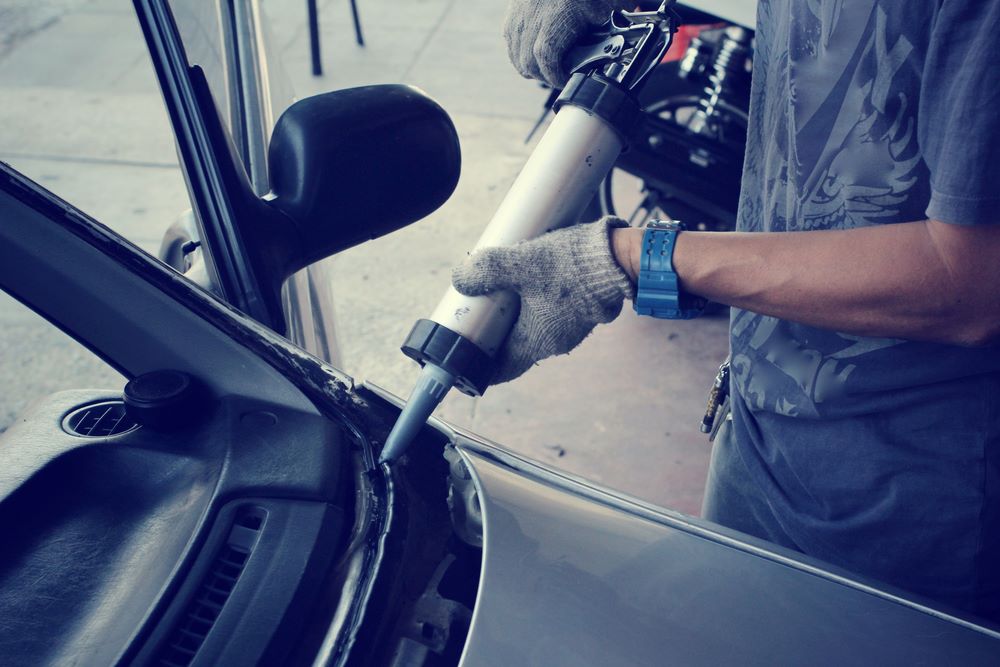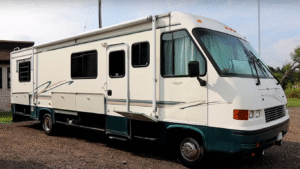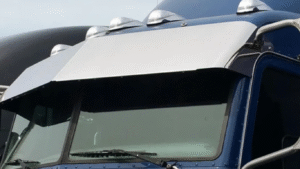Driving around Phoenix means battling more than just traffic. With scorching heat, sudden dust storms, and constant freeway debris, your windshield takes a daily beating. And while a small chip might seem harmless, in this climate, it can turn into a serious safety issue fast.
Ignoring the early signs? That could cost you. Arizona has laws around windshield damage, and insurance may not cover delayed repairs. Plus, a compromised windshield can affect your visibility and your car’s structural integrity—especially during an accident.
In this guide, we’ll walk you through the top 5 signs that say, “It’s time for a replacement.” You’ll know exactly what to watch for, why it matters, and when to take action before a small problem turns into a big one.
1. The Crack That Keeps Growing
Not all windshield cracks are created equal—but if you’re seeing one stretch past six inches, that’s a big red flag. Why? Because your windshield isn’t just there to block bugs and dust. It provides up to 30% of your vehicle’s structural strength, especially in a rollover. Cracks this size can seriously weaken that support and even interfere with airbag deployment, according to SAE International.
In Phoenix, those long cracks spread faster than you’d think. The reason? Thermal stress. Our desert climate swings from blazing heat during the day to cooler nights. That temperature change puts pressure on the glass, making even a minor crack grow fast—sometimes overnight.
So if that crack is getting longer or speeding out, don’t wait. It’s not just cosmetic—it’s a structural and safety issue.
2. Chips in Your Line of Sight: A Clear Hazard
Ever noticed a small chip right in your line of sight? It might seem minor, but even the tiniest blemish can distort your view of the road. This isn’t just annoying—it’s a safety risk. In fact, many vehicle safety inspections will flag a windshield if there’s a crack over 3 inches within the driver’s line of sight, leading to a failed inspection.
Driving with such obstructions increases the chance of accidents, as your ability to react to road conditions diminishes. Plus, depending on your state’s regulations, you might find yourself on the wrong side of the law during vehicle inspections.
In Phoenix, with its bright sun and reflective road surfaces, even a small chip can cause significant glare, further impairing your vision. If you’re noticing chips in your line of sight, it’s time to act. Addressing these issues promptly can prevent the need for more extensive auto glass repair and replacement down the line.
3. White Haze Around the Edges: A Silent Alarm
Ever see a foggy white outline creeping in from the edges of your windshield? It’s not just wear and tear—it’s likely delamination. This happens when the inner bonding layer, made from polyvinyl butyral (PVB), begins to separate from the glass. The result? A weakened windshield that’s more likely to shatter on impact.
This issue is often triggered by prolonged UV exposure and trapped moisture—two things Phoenix drivers deal with regularly thanks to our brutal sun and dry heat. Once delamination starts, your windshield loses both clarity and strength.
According to The Windscreen Company, this type of damage can’t be repaired—it’s a sign your windshield needs to be fully replaced to maintain safety standards.
If you’re noticing this white haze, it’s best to get it checked before the problem worsens.
4. Water Leaks or Wind Noise: More Than Just Annoyances
Have you noticed a faint whooshing sound while driving or discovered unexpected damp spots inside your car after a rainstorm? These signs often point to a failing windshield seal, which is more than a minor inconvenience—it can compromise your vehicle’s structural integrity and comfort.
Why It Matters:
- Compromised Seals Lead to Leaks: A deteriorated seal allows water to seep into your vehicle, potentially damaging electronics, upholstery, and fostering mold growth. Mold not only harms your car’s interior but can also pose health risks to occupants.
- Increased Wind Noise: Damaged or improperly installed seals create gaps that let air infiltrate the cabin, resulting in noticeable wind noise, especially at higher speeds. This not only disrupts your driving experience but may also indicate that the windshield isn’t securely fastened.
Phoenix Drivers, Take Note:
Phoenix’s intense heat can accelerate the deterioration of windshield seals, making vehicles more susceptible to these issues. Regular inspections are crucial to catch and address seal failures early.
What You Can Do:
- Regular Inspections: Periodically check the edges of your windshield for any signs of seal damage or wear.
Prompt Repairs: If you detect leaks or increased wind noise, consult with professionals to assess whether a repair or full windshield replacement is necessary. Addressing these issues promptly can prevent more extensive damage down the line.
5. Previous Poor Installation or Repair: A Hidden Danger
If you’ve had your windshield replaced or repaired before, it’s essential to ensure the job was done correctly. An improperly installed windshield can lead to serious safety issues down the line.
Why It Matters:
- Incorrect Adhesive Use: The adhesive used to bond the windshield to your vehicle plays a crucial role in its structural integrity. OEM-approved adhesives often require specific curing times to achieve full strength. For instance, some urethane adhesives may need up to 24 hours to cure fully, depending on environmental conditions. Rushed jobs, especially in mobile services, might not allow adequate curing time, compromising the bond between the glass and the vehicle.
- Misalignment Issues: A windshield that’s not properly aligned can cause visibility problems and may not sit flush with the car frame. This misalignment can lead to water leaks, increased wind noise, and reduced effectiveness of safety features like airbags. Proper alignment ensures that the windshield contributes effectively to the vehicle’s structural strength.
Phoenix Drivers, Take Note:
The extreme temperatures in Phoenix can affect adhesive curing times. High heat can accelerate curing, but if not monitored, it might lead to improper bonding. Ensuring that your windshield installation adheres to recommended curing times is vital for safety.
What You Can Do:
- Verify Installation Quality: After a windshield replacement, inspect the work. Ensure there are no gaps, misalignments, or remaining old adhesive. The glass should sit flush with the car frame, and the molding should be secure.
- Ask About Adhesive and Curing Times: Inquire about the type of adhesive used and the recommended curing time. Ensure the vehicle remains stationary for the advised period to allow the adhesive to achieve full strength.
Choose Reputable Services: Opt for professional and reputable windshield replacement services that follow OEM guidelines and prioritize safety over speed.
Why Phoenix Drivers Should Act Fast
Phoenix isn’t easy on windshields. Between triple-digit heat, intense UV exposure, and constant freeway debris, your glass takes a daily beating—and small damage can turn serious fast.
Here’s why you shouldn’t wait:
- Extreme Heat = Faster Damage: That little chip you ignored last week? The sun can make it spread—literally overnight—thanks to thermal expansion.
- High-Speed Freeway Driving: With so much road debris flying around, Phoenix freeways are a hot zone for windshield damage. The faster you’re driving, the more impact even a small rock can have.
The Insurance Angle You Shouldn’t Ignore
Arizona has a big perk: most comprehensive insurance policies offer zero deductible glass coverage. That means full windshield replacement—no out-of-pocket cost, if you’re covered. (AZ Legislature – Section 20-264)
Here’s the Practical Move:
If you’ve noticed a crack forming or a chip worsening, it’s best to schedule your car windshield repair and replacement before it spreads or causes a legal/safety issue. Acting early protects your visibility, your passengers, and your wallet.
Frequently Asked Questions
Driving with a cracked windshield in Phoenix is risky and potentially illegal. Arizona doesn’t have a specific statute banning it, but law enforcement can issue a ticket if the crack obstructs your view. In high-traffic zones, cracks can reflect sunlight and impair visibility. If you’re unsure whether it’s still safe to drive, it’s best to consult a windshield repair Phoenix specialist who can assess the severity and legal implications.
Windshield repair works well for small chips or minor cracks (usually under 3 inches), especially if they’re not in the driver’s line of sight. Replacement is needed when the damage is extensive, spreading, or compromises safety. If you’re in need of a full windshield replacement Phoenix due to structural risks, it’s crucial to act fast—especially with Arizona’s harsh climate accelerating damage.
Yes, many auto glass specialists offer same-day side window repair and replacement services, especially for urgent cases like break-ins or accidents. If your side window is damaged, it’s important to fix it quickly to avoid theft risks or further weather-related damage. Always choose a provider who offers genuine glass and seal integrity checks during the service.
Quality auto glass should meet OEM (Original Equipment Manufacturer) or OEE (Original Equipment Equivalent) standards. Reputable providers of auto glass repair and replacement will typically use DOT-certified glass and explain the specs during the consultation. You can ask about the origin of the glass and whether the adhesives follow industry curing times.
Recurring cracks often indicate improper repair, underlying structural stress, or exposure to extreme temperature fluctuations. Sometimes, the wrong type of resin is used, or the edges weren’t sealed correctly. In such cases, a full car windshield repair and replacement is often the better long-term solution to prevent repeat issues.
Absolutely. Many providers in Phoenix specialize in RV windshield repair and replacement, and offer mobile services to your location. This is especially helpful for RV owners traveling through Arizona who may not have time to visit a shop. Make sure to choose a service that has experience with large-format windshields and proper mounting systems for RVs.
Yes, trucks—especially heavy-duty ones—often require thicker or reinforced glass that meets commercial-grade standards. Providers who offer truck windshield repair and replacement will typically carry glass rated for larger vehicles and understand the installation differences (like higher frame clearance and vibration resistance).





